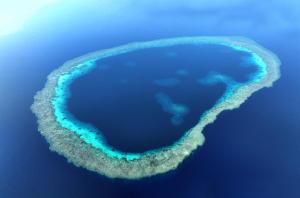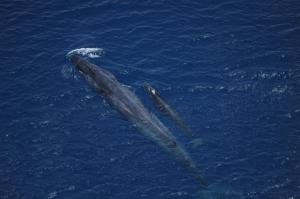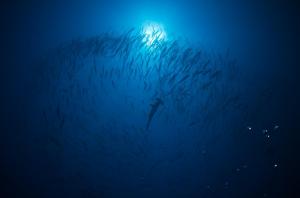SAUDI ARABIA'S RED SEA DECADE EXPEDITION REVEALS REMARKABLE BIODIVERSITY AND NEW SPECIES
Launched by the Saudi National Center for Wildlife with support of the Kingdom’s visionary leadership, this comprehensive exploration has marked a watershed moment in the study of previously unstudied areas in the Red Sea, aligning with national efforts to protect and enhance environmental sustainability and enrich biodiversity in accordance with Saudi Vision 2030 and the Saudi Green Initiative.
Among the multitude of revelations, the discovery of several mesmerizing Blue Holes, each fostering unique ecological systems, and the first-ever identification of great white sharks in the Red Sea through DNA analysis, stand out as milestones in marine exploration. Furthermore, the unearthing of active thermal vents and deep sea brine pools dating back thousands of years has confirmed the existence of unique deep sea marine life.
The expedition's researchers documented the remarkable ability of several sharks to dive to exceptional depths in the Red Sea, navigating waters at a record low depths, likely enabled by the unusually warm temperature at depth in the Red Sea, which hovers around 21 degrees Celsius. Additionally, the discovery of a thriving community of deep-sea lantern fish, displaying remarkable density and resilience to extremely low oxygen conditions, has revealed the Red Sea's captivating marine ecosystem in unprecedented detail.
The expedition has presented striking behavioral observations, including the unprecedented revelation that Bryde's whales reproduce in the Red Sea, challenging prior beliefs about their migratory patterns. Equally notable, the behavior of dolphins seeking refuge in Blue Holes to protect their calves from predatory threats has shed light on the intricacies of the Red Sea's marine dynamics.
By linking DNA sequencing with age assessments of Red Sea seabed deposits, the research team has reconstructed the historical changes in biological diversity over the past 1800 years, offering insights into the region's ecological evolution. Additionally, the documentation of the largest collection of rock samples in the Red Sea has provided invaluable information on the sea's geological processes which, by explaining geologic processes, also demonstrate how they support the Red Sea’s rich biological diversity.
The expedition has also led to the documentation of the most resilient deep-sea coral organisms ever found, showcasing their unique ability to survive for extended periods without oxygen and at temperatures reaching 33 degrees Celsius. Furthermore, the compilation of the first catalog of microorganism genes in the Red Sea holds immense potential for industrial applications in pharmaceuticals, food, energy, and cosmetics.
The research team, comprising 126 researchers from 18 nationalities, in partnership with the King Abdullah University of Science and Technology (KAUST), King Abdulaziz University and OceanX, used cutting-edge technologies such as submarines and eDNA, to successfully complete this groundbreaking 19-week mission.
Beyond scientific exploration, the research team's focus on producing documentary and media materials has provided a captivating window into the environments of the Red Sea and its rich ecological system, offering insights for the global community. The expedition's outcomes not only provide valuable insights into environmental conditions but also serve as a cornerstone for sustainable management of marine areas and the conservation of vital species.
This monumental expedition stands as a testament to Saudi Arabia's unwavering dedication to scientific inquiry and environmental stewardship, reshaping our understanding of the Red Sea's extraordinary marine wonders.
Kenana Dahlan
National Center for Wildlife
+ +966 54 087 0060
email us here
Legal Disclaimer:
EIN Presswire provides this news content "as is" without warranty of any kind. We do not accept any responsibility or liability for the accuracy, content, images, videos, licenses, completeness, legality, or reliability of the information contained in this article. If you have any complaints or copyright issues related to this article, kindly contact the author above.



